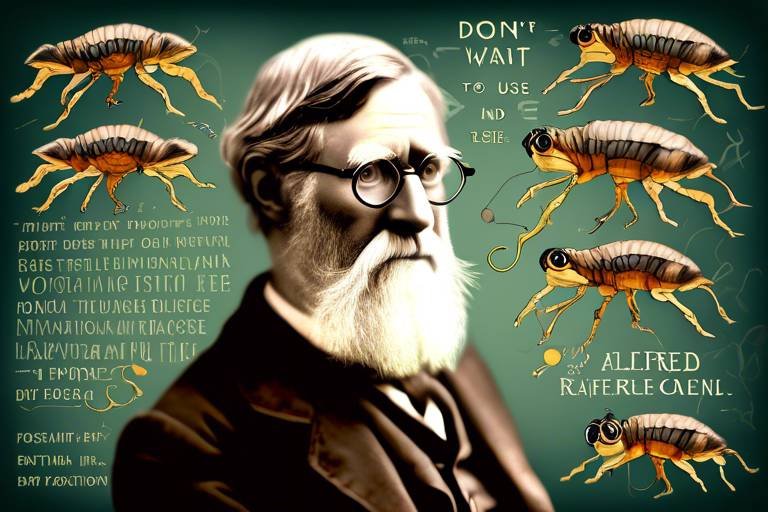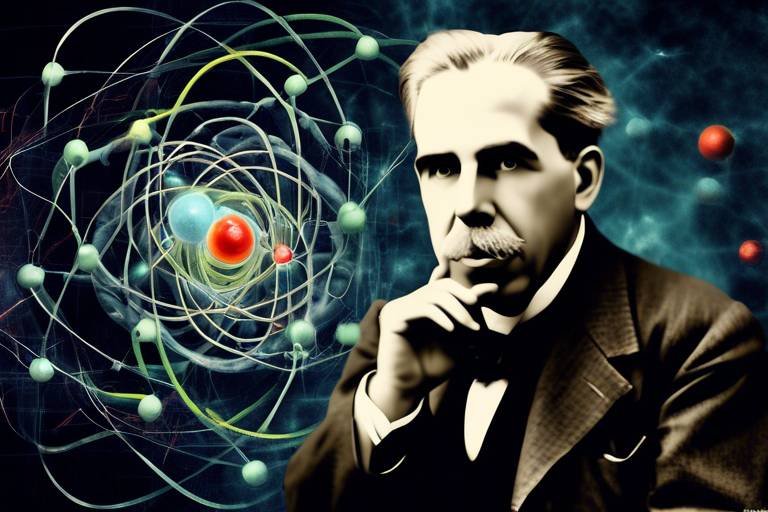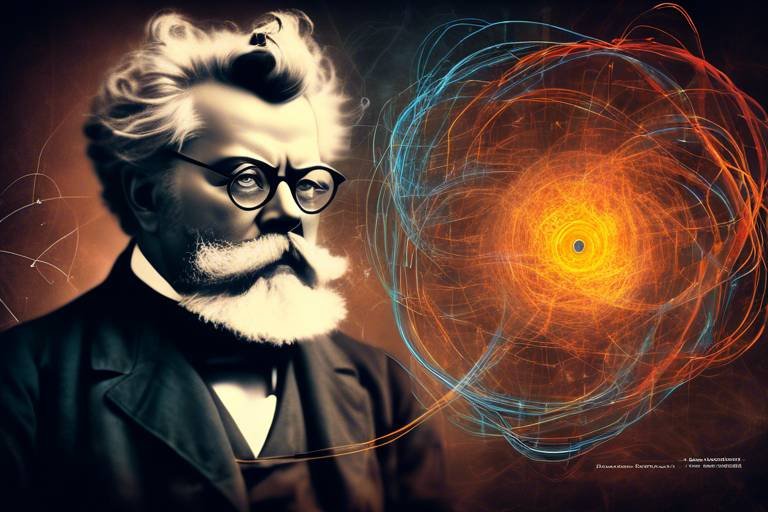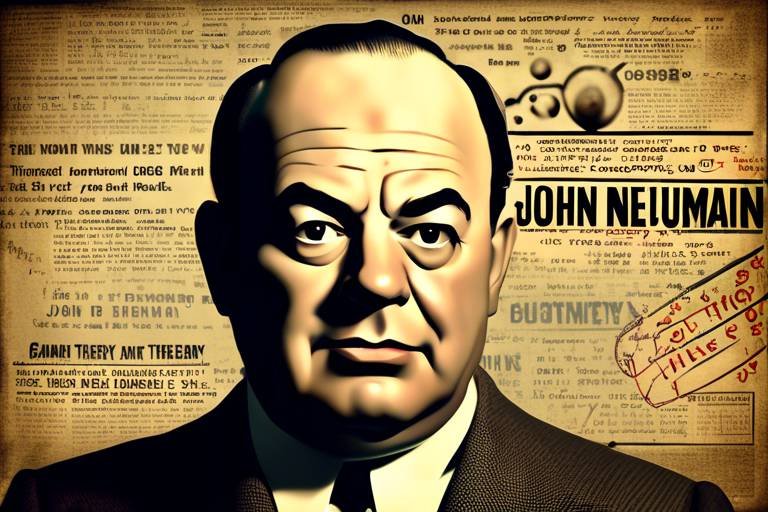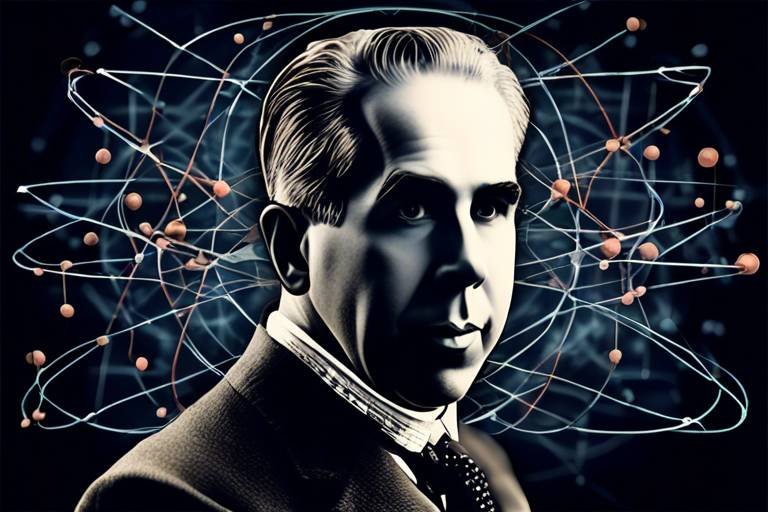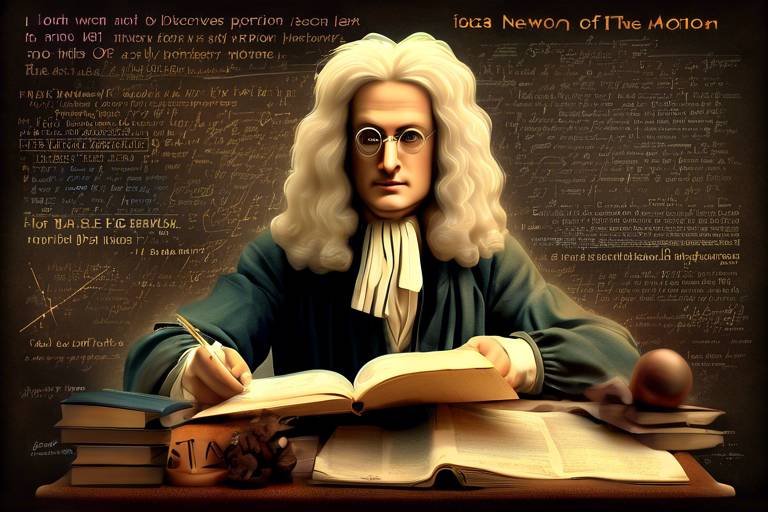The Discoveries of Robert Hooke in Cell Theory
When we think about the building blocks of life, it's hard not to be amazed by the tiny structures that make up all living organisms. One of the key figures in uncovering these mysteries was Robert Hooke, a brilliant scientist whose work laid the foundation for modern cell theory. His observations and experiments in the 17th century revolutionized our understanding of biology and microscopy, opening a window into a world that was previously invisible to the naked eye.
Hooke's journey into the microscopic realm began with his invention of the microscope, which was a significant leap forward in scientific exploration. Imagine peering through a lens and suddenly seeing a whole new universe filled with intricate details—this was the experience Hooke provided to the scientific community. His meticulous observations of various specimens, particularly cork, led him to coin the term “cells”, a name that has persisted through the ages. This moment marked a pivotal point in biology, as it not only identified the basic unit of life but also sparked curiosity and further inquiry into the nature of living things.
As we delve deeper into Hooke's contributions, we find that his work extended beyond just microscopy. He formulated the law of elasticity, which describes how materials deform under stress, showcasing his diverse talents and the interconnectedness of scientific disciplines. This law is still relevant in physics and engineering today, illustrating that Hooke's impact was not confined to biology alone.
Moreover, Hooke's influence did not stop with his own discoveries. His work inspired contemporaries like Antonie van Leeuwenhoek, who further explored the microscopic world, and Isaac Newton, who benefited from Hooke's insights in his own scientific pursuits. The ripple effect of Hooke's findings can be seen in the advancements made in biology and physics, underscoring the importance of his contributions to the scientific community.
However, Hooke's journey was not without its challenges. He faced critiques and controversies, particularly from peers like Newton, who sometimes overshadowed his contributions. Despite these hurdles, Hooke's legacy endured, and his discoveries continue to shape our understanding of life at the cellular level. Today, we recognize Hooke not just as a scientist, but as a pioneer whose work laid the groundwork for future generations of researchers.
In conclusion, Robert Hooke's discoveries in cell theory are not just historical footnotes; they are vital threads woven into the fabric of modern biology. His innovative spirit and relentless curiosity remind us of the importance of exploration and inquiry. As we continue to study the microscopic world, we owe a great debt to Hooke, whose insights opened the door to understanding the fundamental building blocks of life.
- What did Robert Hooke discover?
Robert Hooke is best known for coining the term "cells" after observing cork under a microscope. His work laid the foundation for cell theory.
- How did Hooke's microscope contribute to his discoveries?
Hooke's innovations in microscope design enhanced observational capabilities, allowing him to explore and document the microscopic world.
- What is Hooke's Law of Elasticity?
Hooke's Law states that the force needed to extend or compress a spring by some distance is proportional to that distance, highlighting his contributions to physics.
- How did Hooke influence other scientists?
Hooke's discoveries inspired contemporaries like Leeuwenhoek and Newton, paving the way for significant advancements in biology and physics.

Hooke's Early Life and Education
Robert Hooke was born on July 18, 1635, in the quaint village of Freshwater on the Isle of Wight. The son of a clergyman, Hooke's early life was steeped in the rich traditions of education and scholarship. From a young age, he exhibited a profound curiosity about the natural world, a trait that would define his later scientific endeavors. His family’s modest means did not hinder his thirst for knowledge; instead, they propelled him toward a path of self-education and exploration.
Hooke's formal education began at the local grammar school, where he demonstrated exceptional aptitude in subjects such as mathematics and natural philosophy. His brilliance did not go unnoticed, and he eventually secured a scholarship to attend Christ Church, Oxford, in 1653. At Oxford, Hooke was introduced to a plethora of scientific ideas and theories that were emerging during the Renaissance. He studied under the renowned scientist Robert Boyle, who would become a significant influence in his life. Hooke's time at Oxford was pivotal, exposing him to the cutting-edge scientific discussions of the day.
During his years at Oxford, Hooke engaged in experiments that sparked his interest in microscopy and the study of the minute structures of living organisms. He was not merely a passive learner; he actively participated in the scientific community, collaborating with fellow scholars and contributing to the burgeoning field of natural philosophy. His background in mathematics provided him with the necessary tools to approach scientific problems analytically, allowing him to make connections that many of his contemporaries overlooked.
In addition to his studies, Hooke was known for his artistic talents, often sketching the specimens he observed under the microscope. This combination of artistry and scientific inquiry would later serve him well in his groundbreaking work with the microscope. His early education laid a strong foundation for his future discoveries, blending curiosity, creativity, and rigorous scientific method.
Hooke's journey from a small village to the hallowed halls of Oxford is a testament to the power of education and the relentless pursuit of knowledge. His formative years shaped not only his character but also his scientific outlook, leading to discoveries that would forever change the landscape of biology and microscopy.
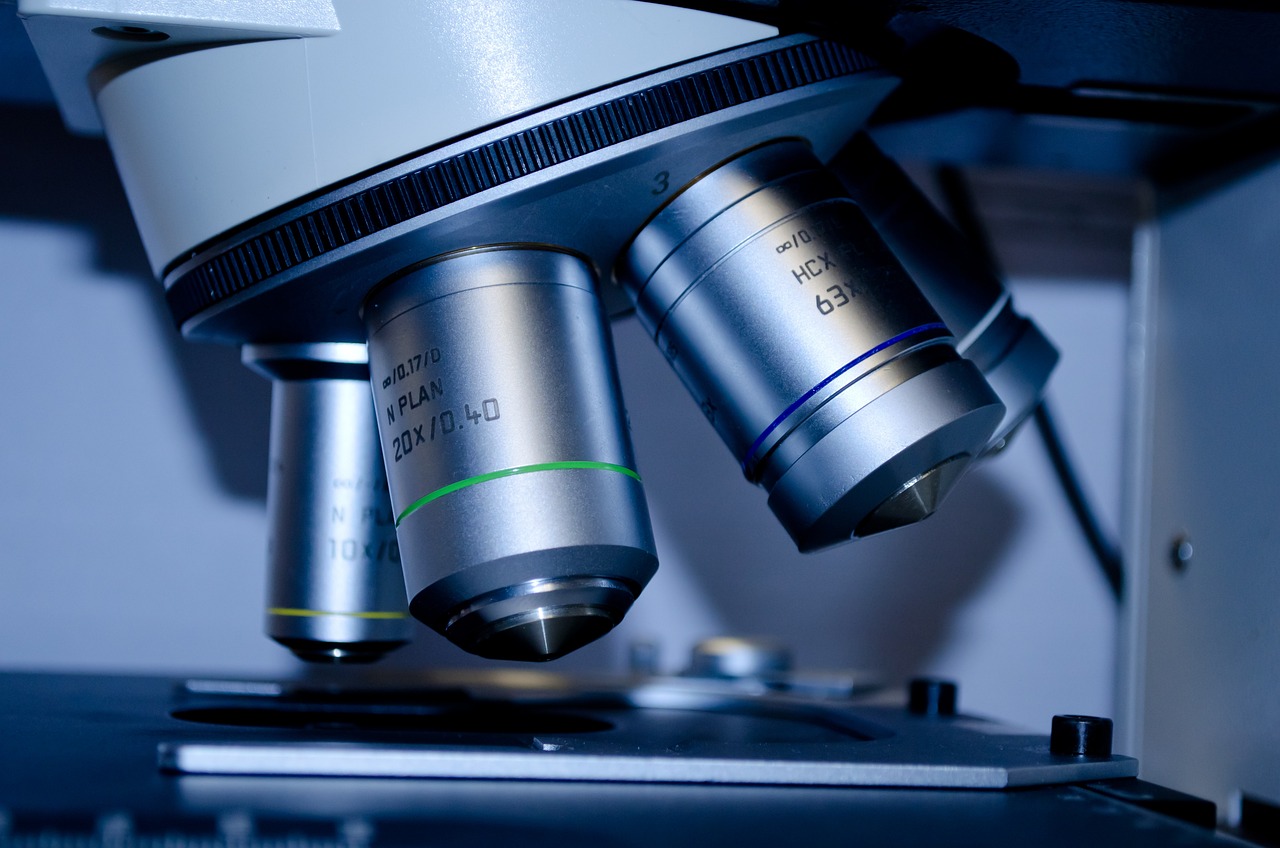
The Invention of the Microscope
The invention of the microscope was nothing short of revolutionary, and Robert Hooke played a pivotal role in its development. Imagine a world where the tiniest details of life were hidden from view, where the very building blocks of organisms remained a mystery. Hooke, along with his contemporaries, transformed this notion through innovation and curiosity. His enhancements to the microscope were not merely incremental; they were groundbreaking, allowing scientists to peer into a realm previously thought to be inaccessible.
Before Hooke, microscopes were rudimentary at best. They lacked the clarity and magnification necessary to make significant observations. However, Hooke's meticulous approach to improving microscope design led to instruments that could magnify objects up to 30 times their original size. This was a game changer! With these advancements, Hooke was able to explore the microscopic world, revealing details that would forever alter our understanding of biology.
One of the most notable features of Hooke's microscope was its use of a compound lens system. This design allowed for better light transmission and a clearer image. Hooke's microscope was not just a tool; it was a window into the unseen. He described his microscope in detail in his famous work, Micrographia, published in 1665. This publication was a treasure trove of observations, showcasing not only his findings but also the beauty of the microscopic world. It was filled with intricate illustrations that captured the attention of both scientists and the general public.
Hooke's fascination with the microscopic world didn't stop at mere observation. He was keen on documenting his findings and sharing them with others. His work inspired a generation of scientists to take up the microscope and explore. The implications of his discoveries were profound; they laid the groundwork for future advancements in biology, medicine, and even materials science.
In addition to his improvements in design, Hooke also emphasized the importance of careful observation and documentation. He understood that the power of the microscope lay not just in its ability to magnify, but in the scientist's ability to interpret what they saw. This idea resonates strongly in today's scientific community, where observation and documentation remain critical components of research.
To summarize Hooke's contributions to microscope invention, let's take a look at the following table that highlights key aspects of his innovations:
| Feature | Description |
|---|---|
| Compound Lens System | Allowed for greater magnification and clarity in observations. |
| Documentation | Emphasized the importance of recording observations for scientific progress. |
| Illustrations | Provided detailed drawings that captivated and educated the public and scientific community. |
| Inspiration | Motivated future scientists to utilize microscopes in their own research. |
In essence, Hooke's invention of the microscope was not just about creating a tool; it was about unlocking the mysteries of life itself. His work opened the door to a new era of scientific exploration, where the smallest details could reveal the grandest truths about the natural world. As we continue to explore the microscopic universe today, we owe a great debt to Robert Hooke, whose innovations laid the foundation for all that followed.
- What did Robert Hooke discover using his microscope? Hooke famously discovered and named "cells" after observing cork under his microscope.
- How did Hooke improve the microscope? He enhanced the design by introducing a compound lens system, which allowed for greater magnification and clarity.
- Why is Hooke's work important today? Hooke's contributions laid the groundwork for modern biology and microscopy, influencing countless scientific advancements.
- What is Micrographia? Micrographia is Hooke's seminal work that details his observations through the microscope, complete with illustrations.

Observations of Cork Cells
In the realm of scientific discovery, few moments are as pivotal as Robert Hooke's examination of cork cells. Using his improved microscope, Hooke peered into the previously unseen world of the microscopic, and what he found was nothing short of revolutionary. His meticulous observations in 1665 led him to coin the term “cells”, a word that would become foundational in the field of biology. But what exactly did he observe, and why was it so significant?
Hooke's exploration began with a simple piece of cork, a material derived from the bark of the cork oak tree. When he sliced this cork into thin sections, he was astonished to find that the structure was not just a solid mass but was composed of tiny, hollow compartments. These compartments, which reminded him of the small rooms (or cells) inhabited by monks, were a revelation. Hooke described them in his groundbreaking work, Micrographia, where he detailed his findings with both precision and artistry.
To understand Hooke's observations, it's essential to appreciate the methodology he employed. He utilized a microscope that he had designed himself, which incorporated a series of lenses that magnified objects up to 30 times their original size. This allowed him to observe the intricate details of the cork structure. The following table summarizes the key aspects of his observations:
| Observation | Details |
|---|---|
| Material Used | Cork from the bark of the cork oak tree |
| Magnification | Up to 30x |
| Key Finding | Discovery of small, hollow compartments |
| Term Coined | “Cells” |
These observations were not just a scientific curiosity; they had profound implications for the understanding of life itself. Hooke's discovery challenged the prevailing notions of the time, which largely viewed living organisms as unchanging and uniform. Instead, he unveiled a complex world where life was composed of discrete units, each serving a purpose. This idea laid the groundwork for future explorations in biology, prompting scientists to investigate the cellular structure of plants, animals, and fungi.
Moreover, Hooke's observations sparked a wave of curiosity among his contemporaries. His work inspired other scientists, including Antonie van Leeuwenhoek, who would later enhance the study of cells with his own microscopic discoveries. The ripple effect of Hooke’s findings can still be felt today, as modern biology continues to explore the intricacies of cellular life.
In essence, Hooke's observations of cork cells were a gateway into the microscopic universe, revealing that life is far more intricate than previously imagined. His ability to communicate these findings through detailed illustrations and clear descriptions made them accessible to a broader audience, ensuring that his contributions would resonate through the ages. As we delve deeper into the world of cells today, we owe a great debt to Robert Hooke, whose keen observations opened our eyes to the building blocks of life.

cells,
This article explores Robert Hooke's groundbreaking contributions to cell theory, highlighting his observations, experiments, and the lasting impact of his work on biology and microscopy.
Understanding Hooke's formative years and his education provides context for his scientific endeavors, revealing how his background influenced his later discoveries in microscopy and cell theory.
Hooke's innovations in microscope design were pivotal in enhancing observational capabilities, allowing him to explore the microscopic world and make significant discoveries regarding the structure of cells.
Hooke's examination of cork led to the identification of cells, a term he coined. This section discusses the methodology and implications of his cork cell observations.
While primarily known for his work in microscopy, Hooke also formulated the law of elasticity, which illustrates his diverse scientific contributions and the interconnectedness of his ideas in various fields.
Hooke's discoveries influenced many contemporary scientists, including Leeuwenhoek and Newton. This section explores how his work laid the groundwork for future advancements in biology and physics.
Despite his achievements, Hooke faced critiques from peers like Newton. This section examines the controversies surrounding his theories and the challenges he encountered in the scientific community.
Hooke's contributions to cell theory and microscopy have left an indelible mark on science. This section discusses how his legacy continues to shape modern biology and scientific inquiry.
In conclusion, Robert Hooke's discoveries remain relevant today, underscoring the importance of his work in understanding the fundamental building blocks of life and the evolution of scientific thought.
When we think about life, we often forget that everything around us, including ourselves, is made up of cells. These tiny units are the building blocks of all living organisms. Hooke's discovery of cells in cork was nothing short of revolutionary; it opened the door to understanding the microscopic world that was previously hidden from human eyes. Imagine looking through a window and suddenly realizing there’s an entire universe outside that you never knew existed! That’s what Hooke did for science.
Cells come in various shapes and sizes, and they perform countless functions that are essential for life. For instance, muscle cells allow us to move, while nerve cells transmit signals throughout our bodies. To put it simply, without cells, life as we know it wouldn't exist. Hooke’s observations were not merely about identifying a new structure; they were about unveiling the complexity and beauty of life at a microscopic level.
To understand the significance of Hooke's findings, it’s essential to recognize the two main types of cells:
- Prokaryotic Cells: These are simpler, smaller cells without a nucleus. Bacteria are the most well-known examples.
- Eukaryotic Cells: These are more complex and larger, with a nucleus and organelles. Plants, animals, and fungi fall into this category.
Hooke's work with cork cells highlighted the importance of cell walls, which are crucial for maintaining the structure of plant cells. This discovery led to further investigations into the differences between plant and animal cells, ultimately laying the groundwork for the field of cell biology. His meticulous drawings and notes provided a foundation that future scientists would build upon.
In addition to his observations, Hooke's approach to scientific inquiry was revolutionary. He combined careful observation with experimentation, a method that is now a cornerstone of scientific research. His work inspired others, like Antonie van Leeuwenhoek, to explore the microscopic world further, leading to the discovery of bacteria and protozoa.
Robert Hooke discovered cells while examining cork under a microscope. He was the first to use the term "cell" to describe the small, box-like structures he observed.
Cells are the fundamental units of life. They perform essential functions that sustain living organisms, including energy production, waste removal, and reproduction.
The two main types of cells are prokaryotic cells, which lack a nucleus, and eukaryotic cells, which have a nucleus and organelles.
Hooke's discoveries laid the groundwork for the field of cell biology, influencing future research and understanding of the structure and function of cells.

a term he coined. This section discusses the methodology and implications of his cork cell observations.
In the realm of scientific discovery, few moments are as pivotal as when Robert Hooke first peered through his microscope at a sample of cork. This seemingly simple observation in the 1660s would lead to the invention of a term that would forever change the landscape of biology: cells. But what exactly did Hooke see, and how did this observation come to hold such significance? Let's delve into the methodology he employed and the profound implications of his findings.
Hooke's methodology was quite innovative for his time. He meticulously prepared thin slices of cork, a material derived from the bark of the cork oak tree. By slicing the cork so thinly, he was able to observe it under his microscope without distortion. His microscope, although rudimentary by today’s standards, was a remarkable achievement of its time, featuring a simple lens that magnified objects significantly. When he looked at the cork, he saw a structure that resembled small, empty boxes or rooms, which prompted him to coin the term cells—derived from the Latin word cella, meaning "small room."
This discovery was not merely a moment of curiosity; it had far-reaching implications. Hooke's observations suggested that all living things were composed of these tiny, fundamental units. It was a groundbreaking idea, laying the groundwork for what would eventually become the cell theory. This theory, which states that all living organisms are composed of cells, is one of the cornerstones of modern biology. Hooke's work prompted other scientists, such as Antonie van Leeuwenhoek, to explore microscopic life further, leading to the discovery of bacteria and other microorganisms.
Moreover, Hooke's findings challenged the prevailing notions of life at the time. Before his observations, the understanding of biological structures was limited. The idea that life could be broken down into smaller units was revolutionary. It opened up a whole new field of study, encouraging scientists to investigate the cellular structures of plants, animals, and even humans. This shift in perspective was akin to discovering a new world beneath our feet, one that was teeming with life and complexity.
In summary, Robert Hooke's examination of cork cells was not just an isolated event; it was a significant leap into the microscopic world that reshaped our understanding of biology. His meticulous methods and the implications of his findings resonate through scientific inquiry to this day, reminding us of the importance of observation and curiosity in the pursuit of knowledge.
- What did Robert Hooke discover about cork cells?
Hooke discovered that cork was made up of tiny, box-like structures, which he termed "cells." This observation was foundational to cell theory. - Why are Hooke's observations significant?
His observations were significant because they introduced the concept that all living organisms are composed of cells, which is a fundamental principle of biology. - How did Hooke's work influence future scientists?
Hooke's work laid the groundwork for future scientists, inspiring them to explore the microscopic world and leading to discoveries in microbiology.
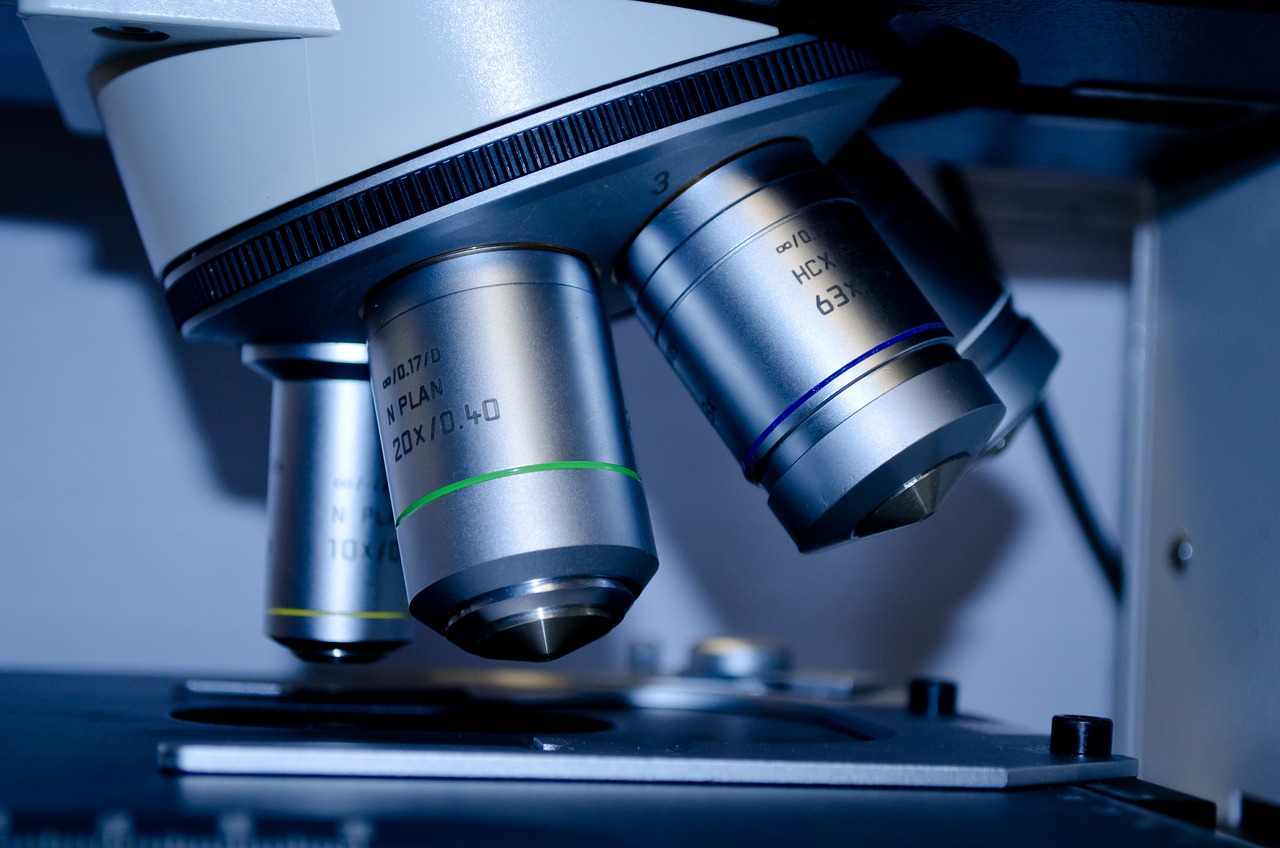
Hooke's Law of Elasticity
While many may recognize Robert Hooke primarily for his pioneering work in microscopy and cell theory, his contributions extend far beyond the confines of biology. One of his most significant achievements is the formulation of , a fundamental principle that governs how materials deform under stress. Imagine stretching a rubber band; the way it elongates and then returns to its original shape is a perfect illustration of Hooke's Law in action.
Hooke's Law states that the force exerted by a spring is directly proportional to the distance it is stretched or compressed, as long as the elastic limit of the material is not exceeded. Mathematically, this relationship can be expressed as:
F k * x
In this equation:
- F represents the force applied to the spring (measured in newtons).
- k is the spring constant, a measure of the stiffness of the spring (measured in newtons per meter).
- x is the displacement of the spring from its equilibrium position (measured in meters).
This simple yet profound relationship has vast implications, not just in physics but also in engineering and materials science. Hooke's insights into elasticity laid the groundwork for understanding how different materials respond to forces, influencing everything from the design of bridges to the manufacturing of everyday objects.
Moreover, Hooke's Law is not limited to springs; it applies to various materials, including metals, rubber, and biological tissues. For instance, when you pull on a piece of elastic fabric, it stretches in proportion to the force you apply, until it reaches its elastic limit. Beyond this point, the material may undergo permanent deformation, illustrating the importance of knowing the limits of elasticity in practical applications.
In the realm of physics, Hooke's Law has also paved the way for further exploration into the properties of materials. Scientists and engineers utilize this principle to develop new materials with specific elastic properties, enabling innovations in technology and construction. The interconnectedness of Hooke's findings in both biology and physics showcases his remarkable intellect and versatility as a scientist.
In summary, Hooke's Law of Elasticity is more than just an equation; it's a testament to Robert Hooke's ability to observe, theorize, and apply scientific principles across various fields. His work continues to resonate today, influencing how we understand and manipulate the physical world around us.
- What is Hooke's Law? Hooke's Law states that the force exerted by a spring is directly proportional to the distance it is stretched or compressed, as long as the elastic limit is not exceeded.
- Who was Robert Hooke? Robert Hooke was a 17th-century scientist known for his contributions to microscopy, cell theory, and the formulation of Hooke's Law of Elasticity.
- How is Hooke's Law applied in real life? Hooke's Law is applied in various fields, including engineering, materials science, and even biology, to understand how materials respond to forces and stresses.
- What happens when the elastic limit is exceeded? When the elastic limit is exceeded, the material may undergo permanent deformation and will not return to its original shape once the force is removed.

Impact on Contemporary Scientists
Robert Hooke's groundbreaking discoveries did not just stand alone; they resonated through the scientific community, influencing a myriad of contemporary scientists. His innovative approach to microscopy opened up new vistas of exploration, allowing others to delve into the microscopic world. One of the most notable figures impacted by Hooke's work was Anton van Leeuwenhoek, who, inspired by Hooke's observations, developed his own microscope and became the first to observe single-celled organisms. Hooke's meticulous documentation of cork cells laid the foundation for Leeuwenhoek's further explorations into the cellular structure of living organisms.
Furthermore, Hooke's influence extended to the realm of physics, where he crossed paths with the legendary Isaac Newton. Their interactions were a blend of collaboration and rivalry, particularly regarding the nature of light and gravity. Hooke's law of elasticity, which describes the relationship between the force exerted on an object and its deformation, became a cornerstone for Newton's later work in mechanics. This interconnectedness of ideas showcases how Hooke's contributions transcended biology and permeated other scientific disciplines.
Hooke's work also inspired a new generation of scientists to adopt a more observational and experimental approach. The culture of inquiry that he fostered encouraged others to question established norms and pursue knowledge through direct observation. This shift was pivotal in the evolution of scientific methods, leading to advancements in various fields, including biology, chemistry, and physics.
To illustrate the breadth of Hooke's impact, consider the following table that highlights key scientists influenced by his work:
| Scientist | Field | Contribution |
|---|---|---|
| Anton van Leeuwenhoek | Microbiology | First to observe single-celled organisms using a microscope. |
| Isaac Newton | Physics | Developed theories of light and gravity, influenced by Hooke's law of elasticity. |
| Robert Brown | Botany | Discovered the nucleus in plant cells, building on Hooke's cellular observations. |
In summary, Robert Hooke's contributions to science were not just monumental in their own right; they served as a catalyst for the work of many who followed. His pioneering spirit and commitment to observation inspired contemporaries and laid the groundwork for future advancements. As we reflect on Hooke's legacy, it becomes evident that his influence is woven into the very fabric of modern scientific inquiry.
- What was Robert Hooke's main contribution to cell theory? Hooke is credited with coining the term "cell" after observing the microscopic structure of cork.
- How did Hooke's work influence other scientists? His innovations in microscopy inspired scientists like Leeuwenhoek and Brown, leading to significant advancements in biology.
- What is Hooke's law of elasticity? It describes how the deformation of an object is proportional to the force applied, impacting the field of physics significantly.
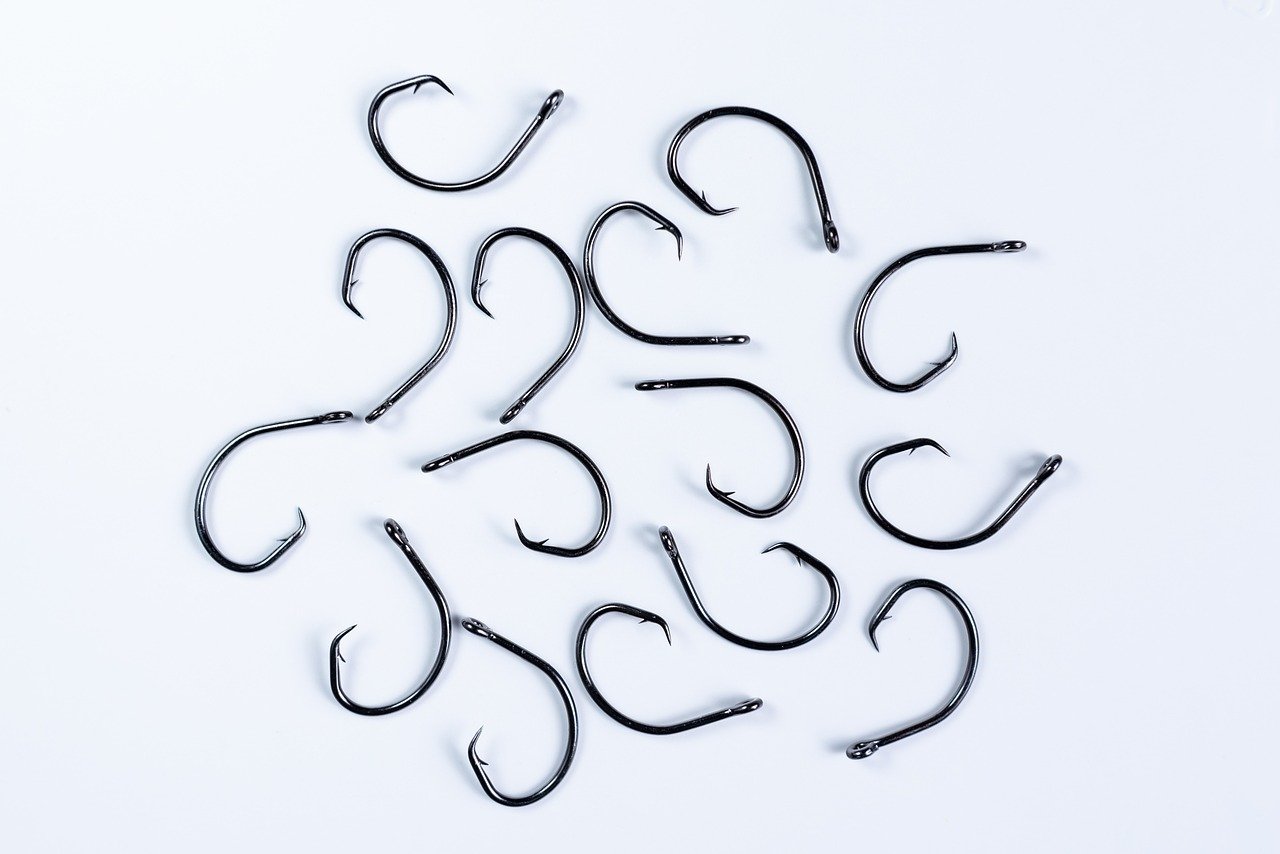
Critiques and Controversies
Despite Robert Hooke's monumental contributions to science, particularly in the realm of microscopy and cell theory, he was not without his share of criticism and controversy. One of the most notable critiques came from none other than Isaac Newton, who was known for his own groundbreaking work in physics and mathematics. Their relationship was complex, marked by both collaboration and rivalry. Hooke's theories sometimes clashed with Newton's ideas, leading to heated debates that would influence the scientific community of their time.
For instance, Hooke published a series of observations that challenged Newton's theories of light and color. In his work, Hooke argued that light was made up of particles, a notion that contradicted Newton's wave theory. This disagreement not only highlighted the tension between the two scientists but also showcased the broader struggle within the scientific community to understand the nature of light. The debates surrounding these theories were not just academic; they shaped the direction of future research in optics and physics.
Moreover, Hooke's meticulous nature and his insistence on empirical evidence sometimes led to friction with other scientists. He was known to be quite protective of his findings, which sometimes resulted in accusations of plagiarism from his contemporaries. For example, the famous scientist Antonie van Leeuwenhoek was known for his own discoveries related to microorganisms, and there was tension regarding who should receive credit for these findings. Hooke's insistence on priority in discovery sometimes overshadowed the collaborative spirit that is essential in scientific progress.
In addition to personal rivalries, Hooke's work was also met with skepticism from various quarters. Some scientists questioned the accuracy of his observations, particularly his descriptions of cork cells. They argued that his conclusions were drawn from a limited sample size and that they could not be generalized to other types of cells. This skepticism is reflected in the following table, which summarizes some of the key critiques of Hooke's work:
| Critique | Details | Source |
|---|---|---|
| Newton's Disagreement | Hooke's particle theory of light conflicted with Newton's wave theory. | Correspondence between Hooke and Newton |
| Plagiarism Accusations | Claims that Hooke took credit for discoveries made by Leeuwenhoek. | Historical records |
| Methodological Concerns | Critics argued that Hooke's sample sizes were too small to draw broad conclusions. | Contemporary scientific reviews |
These controversies, while significant, did not overshadow Hooke's achievements. Instead, they illustrate the dynamic nature of scientific inquiry, where ideas are constantly being tested, debated, and refined. Hooke's legacy is a testament to the idea that science is not just about discoveries but also about the conversations and controversies that shape our understanding of the world.
- What were Robert Hooke's main contributions to science?
Hooke is best known for his work in microscopy, particularly for coining the term "cell" after observing cork under a microscope. He also made significant contributions to physics, including the formulation of Hooke's Law of elasticity. - How did Hooke's relationship with Newton affect his work?
Their relationship was marked by both collaboration and rivalry. Hooke's critiques of Newton's theories led to significant debates that shaped scientific thought, although it also resulted in a contentious dynamic between the two. - What controversies surrounded Hooke's observations?
Some contemporaries questioned the accuracy and generalizability of Hooke's findings, particularly his observations of cork cells. Accusations of plagiarism and methodological concerns were also prominent in critiques of his work.

Legacy of Hooke’s Discoveries
Robert Hooke's contributions to the field of science, particularly in cell theory and microscopy, have laid a robust foundation for modern biology. His pioneering work did not just stop at the invention of the microscope or the observation of cork cells; it sparked a revolution in how we perceive the microscopic world. Think about it: before Hooke, the idea that life could exist at such a small scale was unfathomable. He opened the door to a universe teeming with life forms that were previously invisible to the naked eye.
One of the most significant aspects of Hooke's legacy is the terminology he introduced. The term “cell” itself, which he coined from the Latin word “cella” meaning small room, has become a cornerstone of biological sciences. This simple yet profound observation has influenced countless fields, including genetics, microbiology, and even medicine. Without Hooke's initial observations, our understanding of life at a cellular level would be drastically different today.
Moreover, Hooke's meticulous documentation and illustrations of his findings set a standard for scientific communication. His book, Micrographia, published in 1665, is not just a collection of observations; it is a masterpiece that combines art and science. It provided detailed images and descriptions of various specimens, inspiring future scientists to adopt similar methodologies in their research. The impact of this work is evident in how scientific literature is structured even now, emphasizing the importance of visual data in understanding complex concepts.
Hooke's influence extended beyond biology. His work in physics, particularly his formulation of the Law of Elasticity, showcased his versatility and the interconnectedness of scientific principles. This law provided a framework for understanding how materials deform under stress, which has implications in engineering, architecture, and material science. Hooke's ability to bridge different fields of study demonstrates the holistic nature of scientific inquiry, where discoveries in one area can lead to advancements in another.
In addition to his scientific achievements, Hooke's legacy is also marked by his interactions with other prominent scientists of his time. His rivalry with Isaac Newton is well-documented, and while it led to significant controversies, it also propelled scientific discourse forward. The debates and discussions that arose from their differing views contributed to the evolution of scientific methods and the importance of peer review. This dynamic environment fostered a culture of inquiry that is crucial for scientific progress.
Today, Robert Hooke is often celebrated as a pioneer of microscopy and cell theory, but his legacy is far-reaching. His work continues to inspire new generations of scientists who seek to explore the unknown. As we advance technologically, the principles he established guide our exploration into the microscopic realms, reminding us that there is always more to discover. Hooke's discoveries serve as a testament to the power of curiosity and the relentless pursuit of knowledge.
- What did Robert Hooke discover?
Robert Hooke is best known for his discovery of cells, which he observed in cork using a microscope he designed. His observations led to the formulation of cell theory.
- How did Hooke contribute to the field of microscopy?
Hooke improved microscope design, which enhanced the ability to observe minute details in specimens, paving the way for future advancements in microscopy.
- What is Hooke's Law of Elasticity?
Hooke's Law states that the strain in a solid material is proportional to the applied stress, provided the material's elastic limit is not exceeded.
- How did Hooke influence other scientists?
Hooke's work inspired contemporaries like Antonie van Leeuwenhoek and Isaac Newton, influencing their research and the broader scientific community.

Conclusion: The Enduring Relevance of Hooke's Work
In wrapping up our exploration of Robert Hooke's groundbreaking contributions to cell theory, it's clear that his work continues to resonate profoundly within the scientific community. Hooke's meticulous observations and innovative approach to microscopy not only unveiled the hidden world of cells but also laid the foundational stones for modern biology. His ability to connect seemingly disparate ideas—from the structure of living organisms to the principles of elasticity—demonstrates the interconnectedness of scientific disciplines. Today, as we delve deeper into the microscopic realm, Hooke's legacy serves as a reminder of the power of curiosity and observation.
Moreover, the term "cell," which Hooke introduced, has become a cornerstone in biology. It encapsulates the essence of life itself, emphasizing that all living organisms are made up of these tiny, functional units. Without Hooke's pioneering work, our understanding of cellular structure and function would be significantly stunted. It's fascinating to think that a simple examination of cork could lead to such monumental discoveries! His findings sparked a wave of interest in microscopy, inspiring future scientists like Antonie van Leeuwenhoek, who further expanded our understanding of microscopic life.
As we reflect on Hooke's contributions, we must also acknowledge the challenges he faced, including critiques from his contemporaries. These struggles highlight the often tumultuous nature of scientific inquiry, where groundbreaking ideas can be met with skepticism. Yet, despite these hurdles, Hooke's work prevailed, influencing not just biology but also physics and engineering, as seen in his formulation of Hooke's Law of Elasticity.
In today's rapidly advancing scientific landscape, Hooke's methodologies and principles remain relevant. Researchers continue to build upon his foundational work, utilizing advanced microscopy techniques that allow us to explore cellular processes in unprecedented detail. The essence of Hooke's curiosity and dedication to observation lives on, reminding us that science is a journey of discovery, where each question leads to new insights.
In conclusion, Robert Hooke's discoveries are not merely historical footnotes; they are vital threads woven into the fabric of modern science. His influence extends far beyond his lifetime, echoing through the halls of laboratories and classrooms around the world. As we continue to unravel the mysteries of life at the cellular level, we owe a debt of gratitude to Hooke for illuminating the path with his pioneering spirit and relentless quest for knowledge.
- What was Robert Hooke's most significant contribution to science?
Hooke's most significant contribution was his introduction of the term "cell" to describe the basic unit of life, stemming from his observations of cork under a microscope. - How did Hooke's work influence future scientists?
Hooke's work laid the groundwork for future advancements in microscopy and cell biology, inspiring scientists like Antonie van Leeuwenhoek to explore microscopic life further. - What is Hooke's Law of Elasticity?
Hooke's Law states that the force exerted by a spring is proportional to its extension, illustrating the relationship between force and displacement. - Why is Hooke's work still relevant today?
Hooke's methodologies and insights into cellular structure continue to inform modern biological research and advanced microscopy techniques.
Frequently Asked Questions
- Who was Robert Hooke and why is he significant in cell theory?
Robert Hooke was a 17th-century scientist known for his pioneering work in microscopy and cell theory. He is most famous for coining the term "cell" after observing the structure of cork under his improved microscope. His detailed observations laid the groundwork for understanding the fundamental building blocks of life.
- What were Hooke's major contributions to microscopy?
Hooke significantly advanced the design of the microscope, allowing for greater magnification and clarity. His innovations enabled him to explore the microscopic world in unprecedented detail, leading to discoveries about the structure of various biological materials, including plant cells.
- How did Hooke discover cells in cork?
In his observations of cork, Hooke noted the small, box-like structures that reminded him of the cells inhabited by monks, which is how he coined the term "cell." He meticulously documented his findings in his book "Micrographia," which showcased his drawings and descriptions of what he saw through his microscope.
- What is Hooke's Law of Elasticity?
Aside from his work in microscopy, Hooke formulated the Law of Elasticity, which states that the extension of a spring is directly proportional to the force applied to it, provided the limit of elasticity is not exceeded. This principle has had a lasting impact on physics and engineering.
- How did Hooke influence other scientists?
Hooke's discoveries had a profound impact on contemporaries like Antonie van Leeuwenhoek and Isaac Newton. His work laid the foundation for future studies in biology and physics, inspiring others to explore the microscopic world and the laws governing physical phenomena.
- What controversies surrounded Hooke's work?
Despite his achievements, Hooke faced criticism from some of his peers, notably Isaac Newton. Their rivalry is well-documented, and Hooke's theories were often challenged, leading to debates about priority and credit for scientific discoveries during that era.
- What is the legacy of Robert Hooke's discoveries?
Hooke's contributions to cell theory and microscopy have left an enduring legacy in science. His work continues to influence modern biology, as it helped shape our understanding of cells and their functions, emphasizing the importance of observation and experimentation in scientific inquiry.
- Why are Hooke's discoveries still relevant today?
Hooke's discoveries are relevant because they form the basis of modern biology and microscopy. Understanding cells is crucial for advancements in medicine, genetics, and biotechnology. His innovative spirit and commitment to scientific exploration inspire ongoing research and discovery in various fields.


